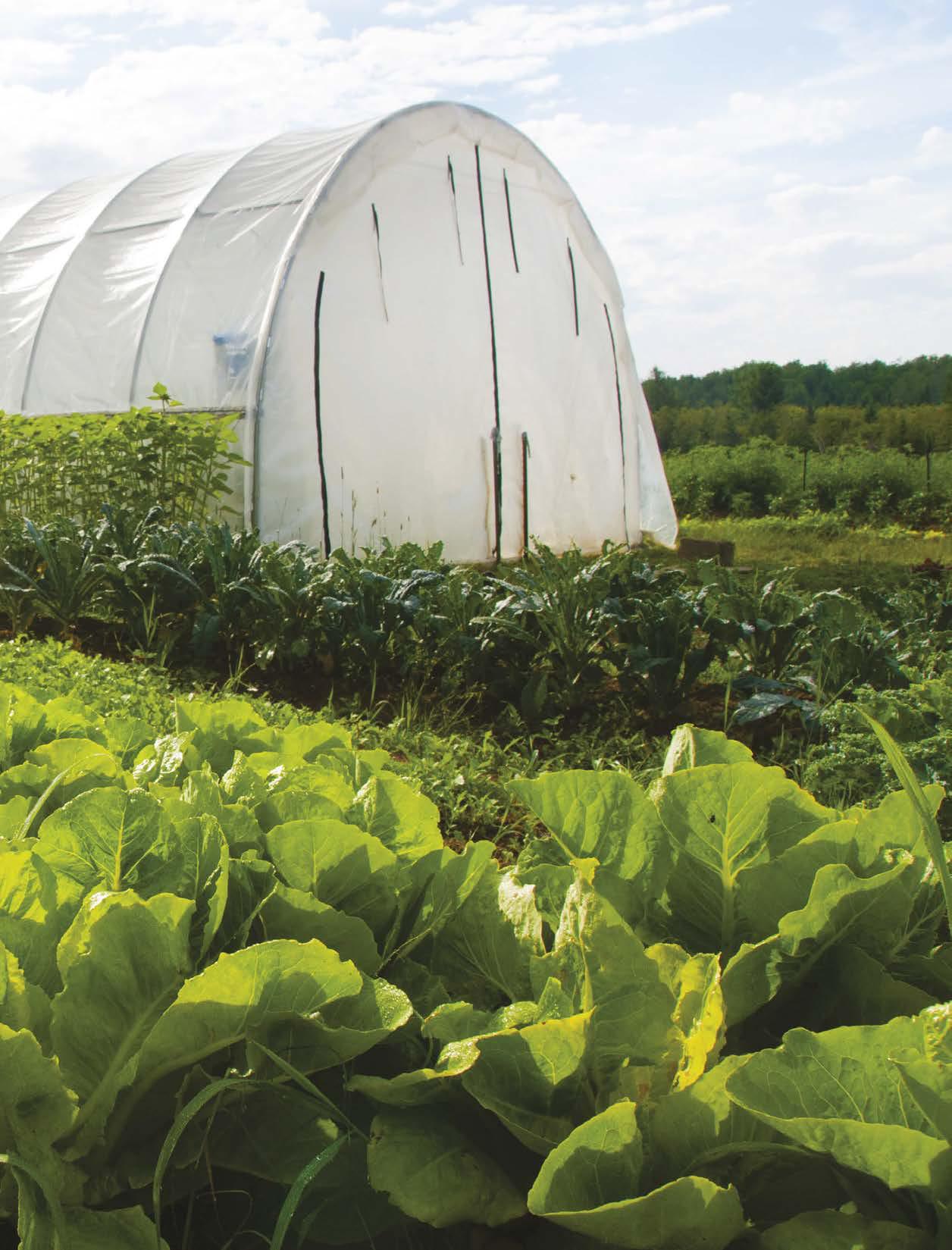GROWING OUTSIDE THE LINES

Any gardener or horticulturist with meaningful experience shopping for plants is familiar with the USDA plant hardiness zone map. (If not, check out the online version at https://planthardiness.ars.usda.gov.) Like an imposing arbiter of vegetation dispersal, the color-coded map breaks the United States and Puerto Rico into 13 zones based on the average annual extreme minimum temperature in other words, the lowest temperature each zone experiences in a typical year. Each zone is further divided into two half-zones, labeled "a" (colder) and "b" (warmer). These zones are used to label the hardiness of plants, determining whether they're suited for planting in any given region. A variety of raspberry bush, for example, might be rated for success in zones 5 through 9.
Some zones are too warm for certain plants; apple trees, for example, need a certain number of "chill hours" (below 45-degrees Fahrenheit) during the winter in order to grow properly and produce fruit. But for much of the United States, cold temperatures are arguably the greater limiting factor than heat. Cold temperatures can quickly damage and kill plants that aren't suitably cold-tolerant. But before you assume you can never grow a plant that isn't rated for survival in your hardiness zone, keep in mind the zone delineations aren't perfect. Zone borders can change over time (the last update to the map in 2012 labeled many areas half a zone warmer than the previous map), and no nationwide map can capture every local temperature nuance.
THE MAGIC OF MICROCLIMATES
The last point is worth reiterating, because it's good news for those of you with ambitious green thumbs. Just because a general region fits within one hardiness zone doesn't mean every acre of land within the region occupies that zone. A "microclimate" is exactly what its name suggests: a small area with a different climate than nearby or surrounding areas.
Bu hikaye Hobby Farms dergisinin March - April 2023 sayısından alınmıştır.
Start your 7-day Magzter GOLD free trial to access thousands of curated premium stories, and 9,500+ magazines and newspapers.
Already a subscriber ? Giriş Yap
Bu hikaye Hobby Farms dergisinin March - April 2023 sayısından alınmıştır.
Start your 7-day Magzter GOLD free trial to access thousands of curated premium stories, and 9,500+ magazines and newspapers.
Already a subscriber? Giriş Yap

Much Ado about MULCHING
MULCHING IS ESSENTIAL TO A SUCCESSFUL GARDEN.

THE ULTIMATE SMALL-FARM HOG Guide
RAISING PIGS CAN BE A TASTY, AFFORDABLE SMALL-FARM ADDITION.

PERENNIAL Perks
PERENNIALS PLANTS CAN PRODUCE AND PRODUCE IF YOU PUT IN THE WORK UPFRONT.

THE breeds YOU NEED
SOME LIVESTOCK DO BEST ON SMALL HOBBY FARMS.

THE Ultimate SMALL-FARM RUMINANT
SHEEP ARE EASY TO MANAGE AND EFFECTIVE FORAGERS.

DAIRY STAPLES
MAKE THESE DAIRY PRODUCTS FROM NONHOMOGENIZED MILK.

raise STRONGER CHICKENS
Look around your kitchen, and you'll likely find some natural poultry supplements.

FLERD is the Word
EXPLORE THE BENEFITS & BARRIERS OF MULTISPECIES PASTURING.

Avant Gourd
GROWING LUFFA GOURDS PAYS OFF IN GARDENS AND AT MARKET.

RIPE with CULTURE
MAKE DELICIOUS, REFRESHING BREADS, MARINADES & MORE.
